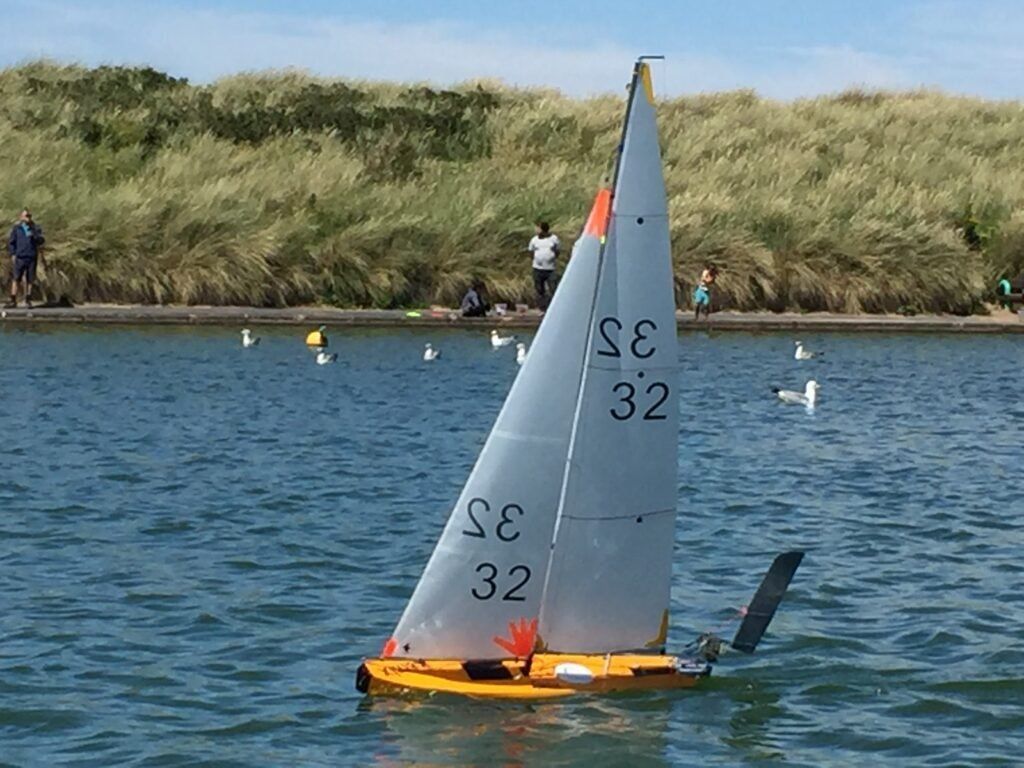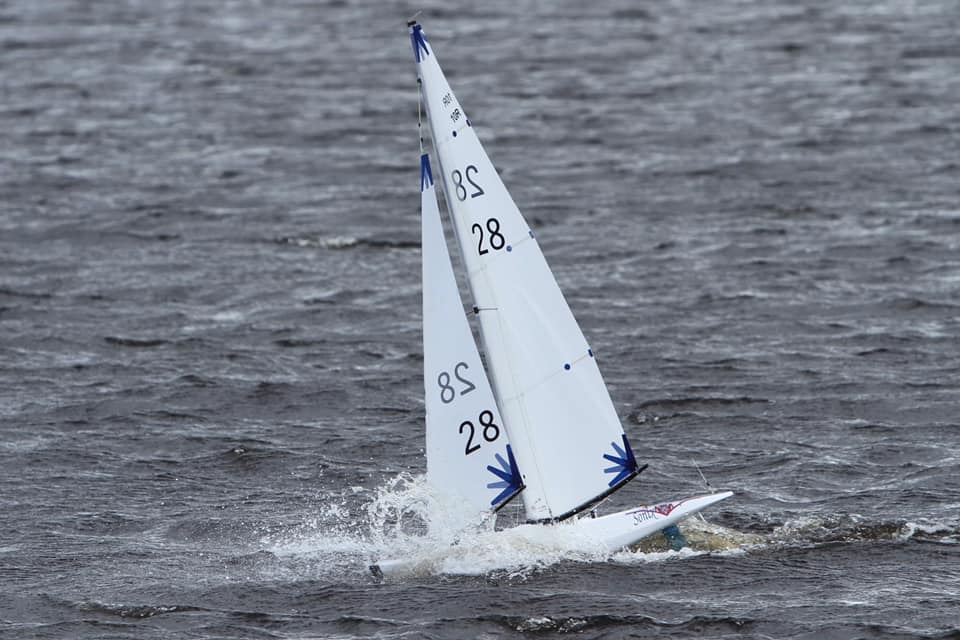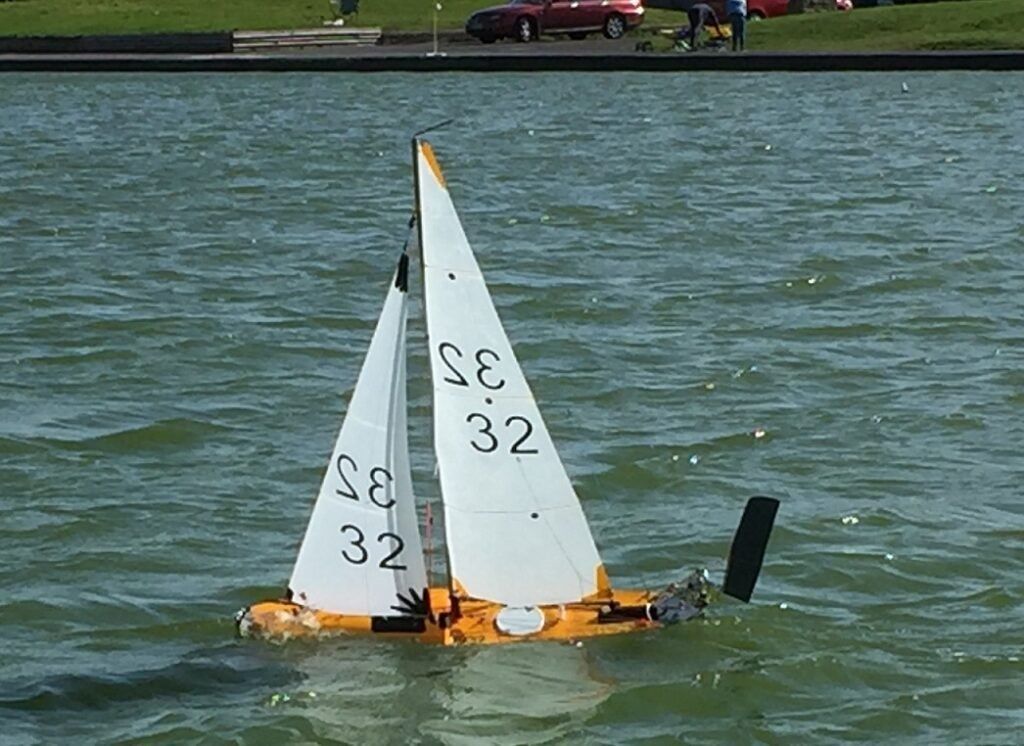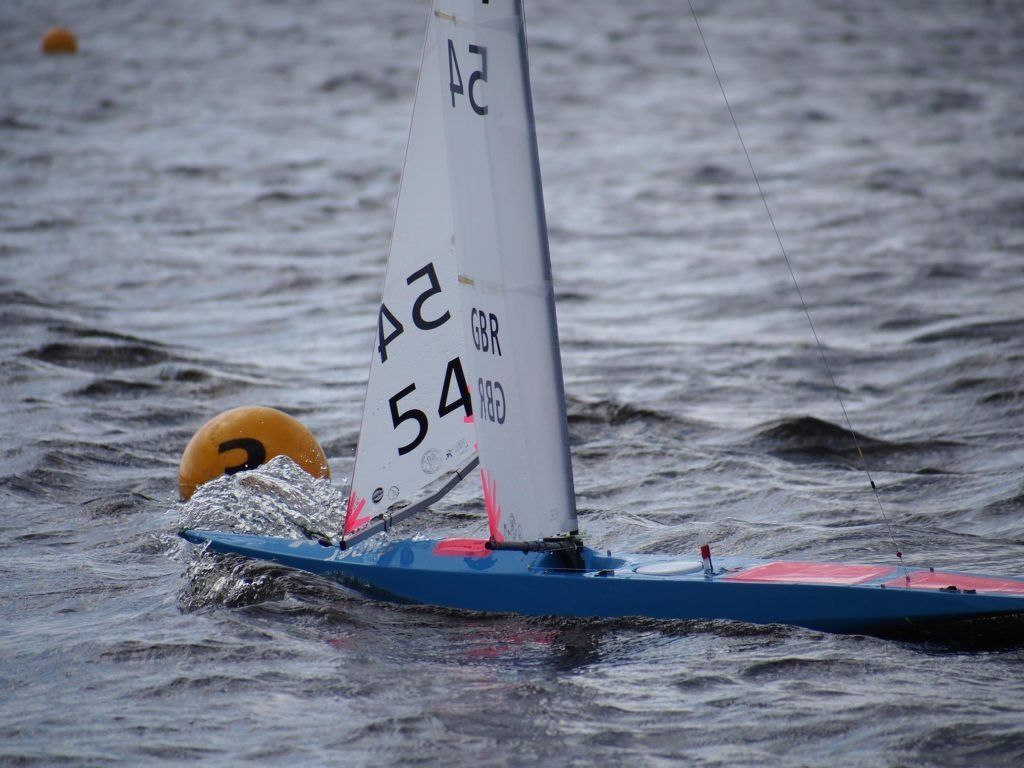For further information and pricings on all designs displayed on this page. Contact Damian Ackroyd on his email below.
Remix (36R Class)
LOA 925mm Beam 220mm Displacement 5.2Kgs
Launched in 2020 and represents our entry into this class. This design may be used for both competitive vane or radio sailing, which is ideal for all skippers who like to sail on a budget.
It is recommended to use high modulus carbon masts. If you’re choosing to build your own rigs using a kit, ensure you follow the instructions carefully from your chosen rig supplier. Additionally, 'Remix' has been successfully tested using converted (IOM) style rigs. Therefore if your keeping to a budget, IOM style rigs are a suitable substitute to use, which will ensure 'Remix' remains competitive across the wind speed bracket. For championship sailing, we can custom make the hull to suit the dedicated 36R sail-plan within our rigging guide.
'Remix' is moulded using the vacuum bag technique. Excess epoxy is squeezed out at temperature to produce a very light but durable shell. The hull kit will come in the form of a part completed yacht, ready for the installation of the rig and radio equipment, or vane system. The hull, deck, rudder, fin box and other internal parts, including the bumper are all fitted to the hull. Deck fittings are installed, the keel, rudder (and skeg for Vane Sailing) are also included. Additionally, the fin and lead ballast are smoothed over with a painted finish.
Sonix (10R Class)
LOA 1680mm Beam 195mm Displacement 5.70 - 5.80kgs
Sonix' represents our introduction into this class. The hull is shaped in such a manner, the waterline extends very quickly to its maximum permissible length. Therefore, this design will achieve maximum sailing speed at the earliest opportunity. The deck is shaped so that the airflow is directed to the sails. Additionally, a mast well is incorporated within the mid-sections of the deck, to allow the rig to remain low and compact, aiding to maximum rig efficiency when sailing.
The RMG winch and batteries are all encompassed within the radio pot. This ensures most of the weight is concentrated in one area. This system is used in most of our products. The hull kit will come in the form of a part completed yacht, ready for the installation of the rig and radio equipment. The hulls are constructed using Carbon / Kevlar as an inner layer with carbon outside. Moulding is done using the vacuum bag technique. This type of construction method forms a light but robust hull.
The deck, rudder, fin box and other internal parts, including the bumper are all fitted to the hull. Deck fittings are installed, the standard length keel, ballast and rudder are also painted and included. A full length of sheeting line is fed through the pulleys and installed with plenty of cord for you to attach to the booms. Your winch and rudder servo can be installed if you supply them. A full or standard length fin can be ordered via 'Robot Yachts' to suit your sailing venue.
Matrix (A-Class)
LOA - 2000mm Beam 300mm Displacement 14.4Kgs
Matrix has been developed for Vane Sailing, everything about the hull shape allows the yacht to quickly travel through the water in a straight line at maximum speed. The bow section has a low profile shape (Dreadnought Style), this keeps the hull close to the waterline. In addition, Matrix also has a lot of tumblehome above the chine, which allows the waterline to extend along the full length of the yacht. The whole concept ensures Matrix reaches maximum hull speed as soon as the yacht heels.
Extra freeboard is built into the design, the purpose of this feature is when you study the class rules, the skipper has the ability to change the overall displacement and rig set up of Matrix for a particular wind condition. Therefore, this design may have more than one registered measurement certificate. Skippers must ensure they use the correct certificate, for their desired configuration for this boat. The main purpose of Matrix is for 'Vane Sailing', but can be considered for radio class events when competing in open water venues in wind speeds above 8mph.
Rig and Sail Setup.
It is recommended to use high modulus carbon tube when constructing the rig. Using diameter tubes of 16.5 / 14 / 12mm will ensure the mast retains maximum stiffness and strength, especially in strong wind conditions whilst flying a spinnaker on the run. The luff rod for the 'Headsail' should be made from 12 / 10mm diameter carbon tube. It becomes a personal choice of how many sails you wish to employ, but generally 3 suits of sails will provide the skipper with a starting point. Which ever supplier of sails you choose, the quality of the carbon mast is of paramount importance. If your choosing to build your own rig using a kit, ensure you follow the instructions carefully from the rig supplier.
The Matrix will come in the form of a part completed yacht, ready for the installation of the rig. The hull's are constructed using an inner layer of Carbon / Kevlar, plus a layer of carbon cloth on the outside to form the hull. Moulding is achieved using the vacuum bag technique. This type of construction method forms a light but robust shell. The hull, deck, rudder, fin box and other internal parts, including the bumper are all fitted to the hull. The ballast will require final fitting and be painted once the measurement process is completed. The 'Vane Steering' system is not included with the hull kit and must be bought as a separate item from a specialist.
For more information, pricings and delivery times contact Damian Ackroyd.
Email:
damian.ackroyd@gmail.com





